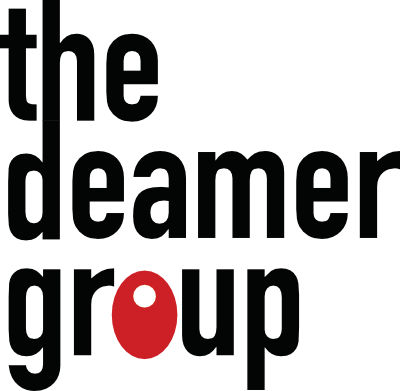Here at TDG, we recently received an email from HR Morning with an intriguing subject line. It asked, “How will you future-proof your workforce?”
The email body continued:
Globalization, generational shifts and digital advancements are transforming the workplace.
The way we work – including people practices such as how we retain and develop talent – must modernize and adapt with the times.
We wholeheartedly agree. Change is a fact of life, and what really matters is how involved we are with the changes, and how ready we then feel to face the future.
2020 is nearly here, and while the labor shortage has been causing employers stress in the world of work for some time, there may be more challenges ahead in the form of a possible recession.
In May 2019, an article published on Recruiting Daily entitled “Recruiters Preparing for the Recession of 2020” began (emphasis original):
It’s been over 10 years since the Great Recession of 2008 and most U.S. economists are now predicting a recession by the end of 2020. Reports are starting to show downtrends in CEO confidence and slowdowns in manufacturing, energy, and high tech. There are signs in the field, too, with less “high volume” job openings and a rising threshold on candidate qualifications.
As an HR professional, you are at the forefront of changes in the world of work. So how can you begin to modernize and adapt to the changes coming? Let’s get some perspective.
“They [HR] are in possession of much more power and influence than they realize. Helping HR actualize its own inherent worth should be an effective strategy in the marketplace and the organization.”
“The 2011 HRxAnalysts Psychographic Survey of HR Professionals”
While we don’t yet have updated research on the current demographics of HR, we know HR is at the forefront of not only workforce changes, but the culture of workforce change, in 2020 and beyond.
Economic challenges or no, it’s always important to be prepared.
A Checklist for Protecting Your Company’s Human Resources
Item #1: Have a plan
You guessed it—the first planning step is to have a plan. Even when you don’t have all the details, a rough plan will give you a better sense of preparedness than none at all.
Interoffice communication between you, higher-ups, and staff, wherever and whenever possible, is key. The difficult decisions of tomorrow will ultimately be much easier on everyone when the C-suite and managers are transparent. This regards everything from future staffing plans to plans to reduce overall costs by using automation and, in the worst-case scenario, letting people go.
As the economic outlook becomes more uncertain, there will be competition for internal shares of the budget. […] If you are expected to achieve certain hiring goals and are concerned about whether there’s a large enough budget to pull it off, make sure you know your costs.
[…] In the event of a budget cut, you are going to be asked to make difficult choices, so start asking tough questions now: Do you have redundant or low-performing employees? […] Can your group afford to make any vendor, personnel, or other budget cuts and still deliver the same value?
You may also want to consider cheaper sources of labor. Technology and automation can help here.
—Mike Starich, “Preparing for the Recession of 2020”
It is a great idea to have a conversation with company administration and make sure you are on the same page in terms of 2020 expectations and priorities, and their impact on the company hiring budget.
Item #2: Retrain, reskill, and upskill current staff—and yourself
One major thing you can do as an HR professional is to deliver continued business value by being aware of your own influence and developing your skills to be the best recruiter you can be.
These days, it’s not enough to put a job post out into the world and wait for candidates to come to you. Nor is it enough to find a few promising candidates and send them a templated message. Great candidates have grown weary with generic outreach — and the more templated messages they receive, the more they’ll seem like white noise.
Amidst all the noise, you can make your voice heard and successfully engage passive candidates by strengthening your communication skills.
“The Skills That Will Matter More for Recruiters in the Future — and How to Develop Them”
Start with the above LinkedIn article about how to adapt your skills, including engaging passive candidates and analyzing talent data to drive decisions.
Where it comes to current staff, it’s important to motivate and retain the good workers and invest in their continuous training too rather than hiring out, as career development opportunities increase retention. Considering the many pitfalls, including the surprising amount of lost revenue, of presenteeism, this may also influence employee engagement and well-being.
Employees are hungry for training, which means the confidence that comes from improving their own skills, providing ongoing value, and having job security.
Matt Powell, writing for The Undercover Recruiter, put it well (emphasis ours):
A staggering 94 percent of employees say that they would stay at a company longer if it simply invested in training and learning programs. Needless to say, investing in the appropriate tools to facilitate meaningful learning doesn’t just impact skills, but overall retention, loyalty, and satisfaction – all of which will be critical in determining which companies sink or swim amid industry and societal change going forward.
Just as needed skills are changing, so are preferred methods for learning. Training needs to be thoughtful, personalized, and available based on where, when and how employees choose to learn. Traditional training formats like instructor-led courses or mandatory workshops can’t achieve the level of customization that’s needed to push learning forward. Technology-driven learning is the only way to maximize the benefits of training and actually assess ROI.
Prioritizing reskilling over recruiting can be a far more cost-effective option for businesses in need of new skill sets. Luckily, there are learning technology tools that help organizations answer the subsequent question: where do we start? AI-powered learning tools eliminate the guessing game around addressing those internal gaps, and can even help executives identify underlying strengths among staff too. L&D programs don’t have to cost millions to become more intuitive, more available and more focused on the learner. Utilizing AI and the power of 24/7 ‘anywhere’ learning, businesses can completely change what learning can be and needs to be, to prepare workers for the future.
Item #3: Cultivate a multigenerational workforce
With our piece on retention now being spoken, natural turnover means you’ll have to make some hires. Choose to cultivate diversity. Multi-generational workforces bring a large variety of skills to the table, from hardworking and experienced traditionalists to loyal and ambitious Baby Boomers, and from flexible and diplomatic Gen Xers to innovative and tech-savvy Millennials and, most recently, creative and focused Gen Zers.
Diversifying your staff provides a natural, resourceful protection for your company’s future. For one thing, despite the stereotypes, the “face-time” preferred by traditionalists and Baby Boomers is coming back in style with Gen Z. Older workers make excellent mentors and intellectual sparring partners for younger employees, while younger staff bring drive and tech skills needed by older employees.
Item #4: Assess soft versus hard skills
Mind the (soft versus hard skills) gap. While HR professionals at large are beginning to see the long-term business value of soft skills generally, it’s important to first prioritize needed skills and tailor your recruiting methods to those needed for your company more specifically, and then learn how to assess them in the candidates you source.
A whopping 91% of talent professionals agree that soft skills are very important to the future of recruiting and HR. […] But while there is near unanimity about the significance of soft skills, there is no consensus about how to evaluate them. One reason for this is that there are some myths about these elusive skills that are holding many companies back from assessing them effectively and can even lead to unconscious bias in hiring.
Level up with additional resources by reviewing the data on the most in-demand soft skills and how to assess them in candidates.
Item #5: Automate as much as possible
Recruiting Brief says it all: “Automated processes really make the busywork of staffing more efficient,” whether resume screening with an ATS system, performing a background check, or sending candidate follow-ups.
Meanwhile, keep ahead of the game with these emerging technologies.
- Predictive analytics “Analytics assist an employer in analyzing current workers and top performers and predicting which candidates may translate into high-performing employees,”
- Enhanced vetting involves “Delving more extensively into a job candidate’s background [as] a short-term task that can pay long-term dividends,” and even
- Artificial Intelligence.
That last one is already making its mark in both job advertising and applications: “While the human touch point is important, automation [using algorithms and matching and response] will soon reign.” Read more with SHRM’s “Five Recruiting Trends for the New Decade.”
Item #6: Adapt to modern recruiting communication
Guess what? Texting is now becoming an appropriate way to communicate with candidates (emphasis ours).
Nearly every candidate you want to reach is carrying their phone around with them at all times. And, whatever you text, it has to be short and sweet—that is the nature of the medium. From the candidate’s perspective, it is easy to write back a quick text no matter where they are, whether on the bus or at a restaurant. It’s much easier to respond via text than pick up a phone call.
As it becomes more commonplace, the texting trend will make it easier to connect with candidates—both for its quickness and as a way to keep candidates more easily engaged in the process.
Item #7: Hire a contractor
If you need someone fast and flexible and you are prepared to detail the scope and timeline, consider bringing on a freelancer.
Freelancers can be an asset to any organization that wants to have access to a network of pre-vetted candidates, save HR time and resources, and lower company costs, at the same time as keeping your flexibility to attend to hiring bursts as the situation fluctuates.
Where to Next in 2020?
There are a variety of methods HR professionals are using to reduce anxieties about economic challenges and future-proof the nature of their work, including relationships to current company staff and potential hires.
This entails reskilling and retraining current employees to increase retention of top performers, assessing the skills and competencies you need in new hires, and harnessing and adapting to new technologies.
Learning how to nurture and grow your staff from within will ultimately lead to you cultivating and retaining high-performing talent, from the present to far in the future.

